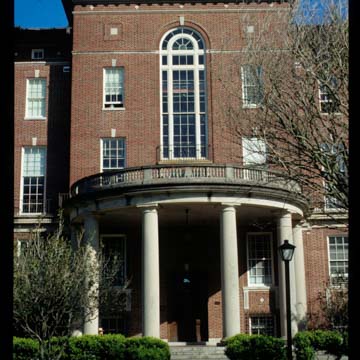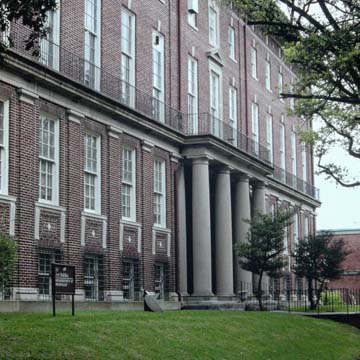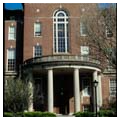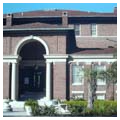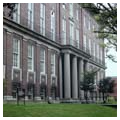In 1886, Josephine Louise Newcomb donated $100,000 to establish a women’s college in memory of her deceased daughter, Harriet Sophie Newcomb. The college was designated a coordinate college of Tulane University with its own president and administrative structure—the nation’s first degree-granting coordinate college for females established within the framework of a university for males. It opened in 1887 with thirty students in a former mansion downtown but soon outgrew this space and transferred its 174 students to a larger Garden District mansion. It was at this second location that the college earned national attention for the Newcomb Pottery (see OR147), a quasi-commercial venture fostered by the art program in which the students also produced metalwork, textiles, jewelry, and other handicrafts until 1940.
In 1918, Newcomb moved Uptown to a site adjacent to Tulane, into a new campus designed by Rogers, who had won the design competition in 1911. The competition program specified that the buildings be architecturally distinct from Tulane’s and constructed of brick. According to the Board of Administrators’ minutes of January 1912, Rogers’s proposal pleased the judges because the design displayed “great dignity, memorial character, a style both American and Southern, and had the refinement, simplicity and charm fitting for a college for women in the south.”
Newcomb’s buildings form two open-ended courts, with Newcomb Hall, the academic and administrative building in the center, linking the quadrangles. Twelve buildings were planned, but only four were erected initially because of a lack of funds. All are built of a domestic-looking red brick with white trim and have small balconies and diffident classical details; for example, the shallow, four-columned Ionic pedimented portico of Newcomb Hall, although tall, is disproportionately small in relation to the size of the building. Although there is nothing bold or assertive about these structures (presumably the reason the judges thought the design sufficiently feminine), the ensemble is unified and harmonious. Emile Weil completed the buildings around the quadrangle, including Dixon Hall, in 1928. Subsequent buildings have followed Rogers’s concept in scale and materials, while achieving a more contemporary appearance. Elleonora P. McWilliams Hall (1996, Waggonner and Ball Architects) is particularly successful, blending with the other buildings through its use of red brick. On its third story, a continuous band of windows under spreading eaves makes the building appear less weighty while giving it a contemporary look.


